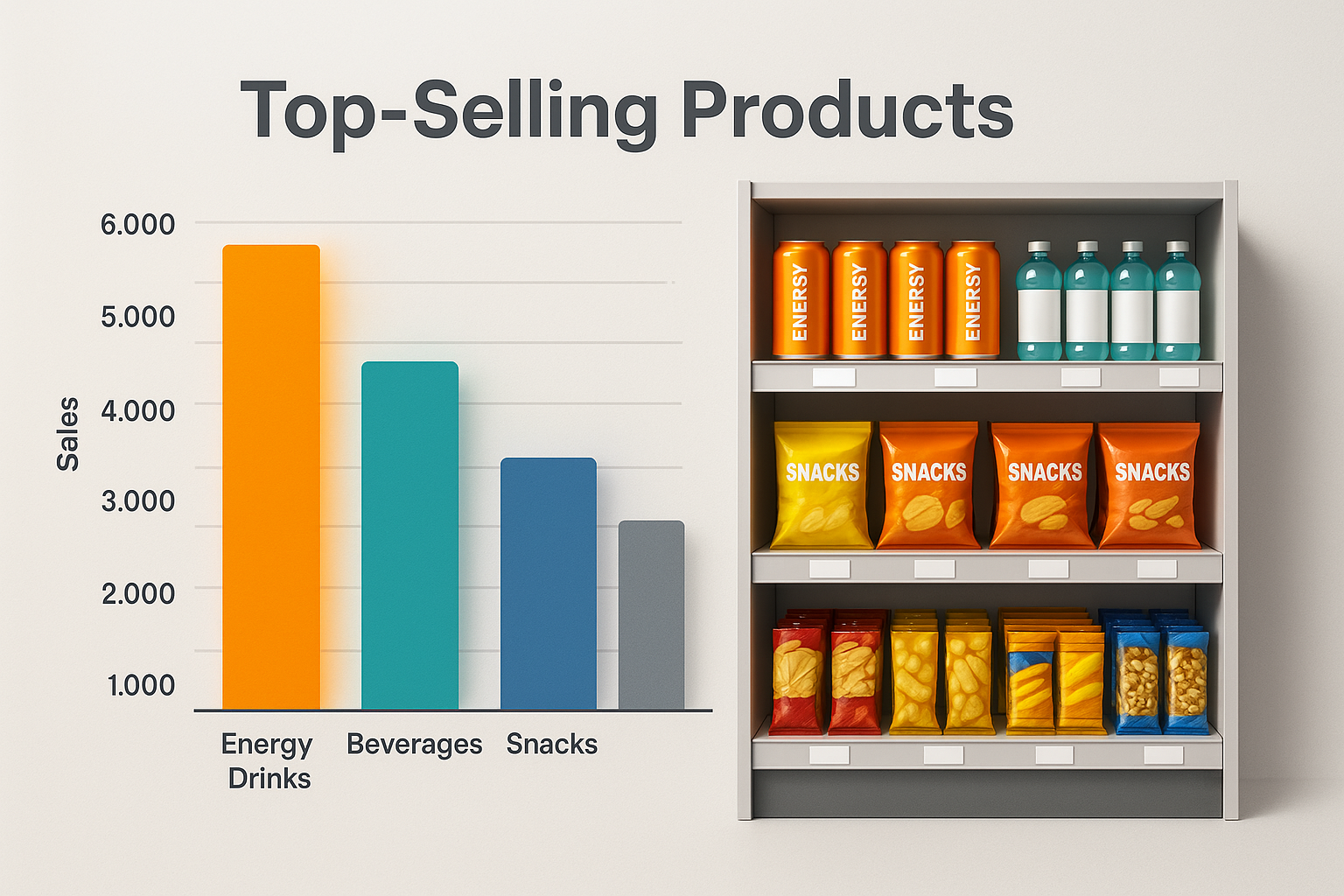Finding Your Store's Stars: How to Identify and Leverage Top-Selling Products
You reach for the cooler door as a customer asks, "Where's the Monster Energy? You guys are always out of the green ones." The difference between successful stores and struggling ones often comes down to knowing which products drive your business.

You reach for the cooler door handle as a customer asks, "Where's the Monster Energy? You guys are always out of the green ones." Minutes later, another customer sighs at the register, mentioning it's the third time this week your store has run out of her favorite cigarette brand. Meanwhile, the seasonal display of holiday candy sits largely untouched, taking up valuable floor space. The difference between successful convenience stores and struggling ones often comes down to something surprisingly basic: knowing exactly which products drive your business.
Understanding your top sellers transforms everything from inventory management to store layout, promotional planning, and ultimately, profitability. When you recognize the products your specific customers value most, you gain the power to make smarter business decisions that satisfy shoppers and strengthen your bottom line.
Why Tracking Top Sellers Matters
Every convenience store carries thousands of products, but typically, a small percentage generates the majority of profits. Identifying these star performers allows you to:
Prevent costly stockouts of items customers specifically visit your store to purchase Allocate prime shelf space to products that sell quickly Reduce waste from slow-moving inventory Make data-driven decisions about new products to introduce Create effective promotions around your most popular items
The best part? You already have access to the information needed to identify these crucial products.
Finding Your Top Performers
Several methods help pinpoint your store's most important items:
Review Sales Reports: Your POS system contains valuable data showing which products sell most frequently and generate the highest total revenue. Most systems can produce reports ranking products by units sold, dollar sales, or profit margin. Review these weekly to spot both consistent top performers and emerging trends.
Track Stockouts: Products that frequently run out provide clear signals about customer demand. Create a simple log where staff record items customers request that are out of stock. Patterns will emerge showing which products might need increased order quantities.
Listen to Customer Comments: Your team interacts with customers daily and hears direct feedback about sought-after products. Create a system for collecting and sharing these customer mentions, whether through a dedicated notebook, staff meeting discussions, or digital messaging.
Analyze Category Performance: Look beyond individual products to understand which departments drive your business. Does your store excel in beverages, snacks, tobacco, or prepared foods? This broader view helps allocate resources effectively across store sections.
Study Seasonal Patterns: Top sellers shift with seasons, weather, local events, and holidays. Track these patterns to anticipate demand spikes before they occur.
Turning Data Into Action
Once you've identified your top performers, use this knowledge strategically:
Adjust Par Levels: Increase minimum stock requirements for proven sellers to prevent stockouts. Your top 20-30 products should rarely, if ever, be unavailable to customers.
Optimize Product Placement: Position best-sellers at eye level in high-traffic areas. Consider secondary placements for these items to increase visibility and capture impulse purchases.
Create Effective Promotions: Build specials and bundles around your top items rather than trying to push slow movers. Pairing a popular product with a complementary item often increases overall basket size.
Inform Ordering Decisions: Use historical sales data to adjust order quantities ahead of anticipated demand increases. Many top sellers show predictable patterns around paydays, weekends, or seasonal events.
Guide New Product Selections: When considering new items, look for similarities to existing top performers. Products with comparable characteristics often appeal to the same customer base.
Making It Part of Your Routine
Successful top-seller tracking becomes a habit, not a one-time analysis:
Start each week by reviewing your previous week's top 20 products Conduct a daily floor check of your top 10 items to ensure adequate stock Train all staff to recognize and prioritize restocking high-demand products Schedule monthly reviews of category performance to spot longer-term trends Share insights about top performers with your team regularly
Balancing Data With Observation
While sales numbers provide concrete evidence, remember to balance analytics with real-world observation. Watch how customers move through your store. Notice which items they seek out specifically versus purchase on impulse. Observe which products create disappointment when out of stock.
This combination of hard data and customer behavior insights creates the most complete picture of your truly important products.
The most successful convenience stores maintain laser focus on their proven winners while still remaining open to emerging trends and opportunities. They recognize that while thousands of products fill their shelves, a much smaller number truly drives their business.
Next time you walk your store aisles, will you see just products on shelves, or will you recognize the vital few that form the backbone of your store's success?